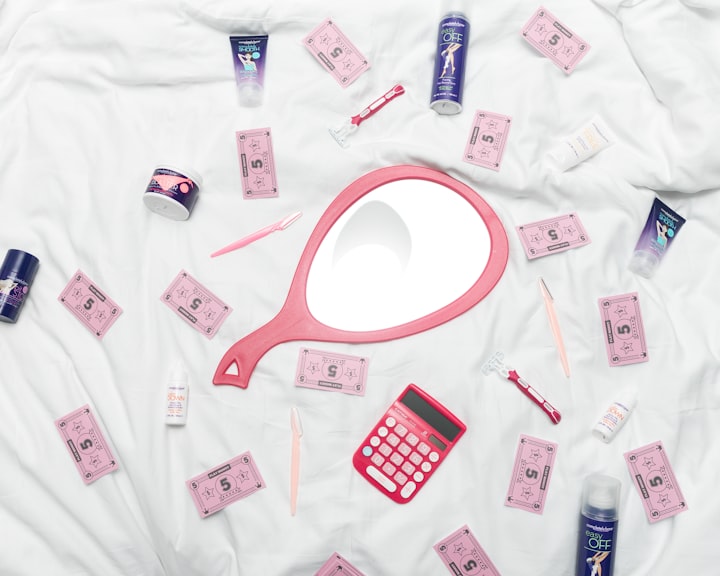
Did you know that you could be paying more for products and services just because of your gender? That's right! The pink tax is a form of economic gender discrimination that affects women worldwide, and it costs them thousands of dollars over a lifetime.
It's not just about the color pink; it's about the unfair pricing based on gender. Studies show that women pay more than men 42% of the time for similar products and services. This injustice impacts different countries and sectors, from personal care to elderly care, and it has a severe impact on women's economic participation and empowerment.
And it's not just about the price tag. The pink tax perpetuates gender stereotypes and reinforces societal norms that women are worth less than men. This issue disproportionately affects women of color, who already face systemic discrimination and earn less than men.
But don't worry; we're not here to just complain about the pink tax. In this article, we'll explore what the pink tax is, how it varies across regions, and what can be done to end it. It's time to take action and put an end to this unfair practice once and for all. So, let's dive in and learn how we can fight back against the pink tax!

How does the Pink Tax Affect the Economic Empowerment of Women?
The pink tax is a global issue that affects women in different countries and sectors. For instance, in the US, women pay 13% more for personal care products, 8% more for clothing, and 8% more for dry cleaning than men. In contrast, in the UK, women pay 31% more for razors and 12% more for hair products than men. Moreover, Australia imposes tampon tax, which is a GST (goods and services tax) applied to menstrual products as luxury items. This adds an extra 10% to the cost of these essential products for women. Although there have been campaigns and petitions to abolish the tampon tax in Australia, it still remains in place as of March 2023. The pink tax is not just limited to developed countries; women in developing countries also face a higher cost of living due to gender-based pricing. According to an article by This Is Africa, women in Africa pay more for essential items such as sanitary pads, contraceptives, soap, and shampoo. The article cites a study by ActionAid that found that women in Ghana pay 12% more than men for these items, while women in Nigeria pay 8% more.
Here is a table of some examples of items and services that have pink tax attached to them, along with their prices for women and men and the percentage difference:

The prices are based on average costs in the US. The percentage difference is calculated by dividing the difference between the prices by the price for men and multiplying by 100. These are estimations and prices will differ according to quality, product, brand and region.

How Effective are the current Policies to Eliminate the Pink Tax?
The pink tax is a major obstacle to economic empowerment for women, especially those in college or starting their careers. By charging women more for the same products and services, the pink tax limits their purchasing power and widens the economic gap between men and women. This means that women have less money to invest in education, health, business, and other opportunities.
As if that wasn't bad enough, the pink tax also forces women to pay more for essential products like sanitary pads and contraceptives. These items are necessary for women's health and well-being, but the added cost can be a real burden. And for women of color, who already face wage gaps and discrimination, the pink tax can be an even heavier load to bear.
Different countries have adopted different policies and attempts to repeal pink tax, but the fight is far from over. In the United States, some states have passed laws to prohibit gender-based pricing discrimination for services like haircuts or dry cleaning, but loopholes still exist, and products like razors and shampoo are not covered by these laws.
In the UK, the government introduced a gender equality law in 2018 that required companies to disclose their gender pay gap. However, disclosing the pay gap is not enough to address the issue of pink tax, which is often caused by the gender pay gap.
Canada has a gender-based analysis policy that requires all policies and programs to be analyzed for their impact on gender. However, there is no specific legislation or regulation that addresses pink tax in Canada at the federal level.
Despite some global initiatives to raise awareness and challenge pink tax, the practice doesn't appear to be going away anytime soon.

These Brands Are Saying No to the Pink Tax and Yes to Gender Equality.
Some brands have recognized the problem of the pink tax and have taken steps to end it or reduce it. Here are some examples of how they have done so:
- Boxed: This online retailer was one of the first to take a stand against the pink tax in 2016. The company adjusted the cost of items like shampoo and razors that were priced differently for men and women, and absorbed the cost difference itself. The company also launched a campaign called #RethinkPink to raise awareness and educate consumers about the issue.
- Billie: This razor company was founded in 2017 with a mission to offer high-quality razors at an affordable price for both men and women. The company also challenged the stigma around body hair and celebrated women’s choice to shave or not shave through its ads and social media posts.
- European Wax Center: This beauty service provider launched a campaign called #AxThePinkTax in 2018 to highlight how much more women pay for waxing services than men. The campaign offered discounts, giveaways, and educational content to customers and partnered with other brands that support gender equality.
- Thinx: This period underwear brand has been vocal about ending the pink tax on menstrual products, which are often taxed as luxury items rather than necessities in many countries. The brand has advocated for policy changes, donated products to low-income communities, and created educational resources on menstrual health.
- Harry’s: This razor company sold high-quality razors at a fair price for both men and women. The company also donated 1% of its sales to organizations that support mental health and social justice.
- Lunapads: This reusable menstrual product brand fought against the pink tax on tampons and pads since 1993. The brand also supported menstrual equity and education through its social impact programs.

The Challenges of Ending the Pink Tax: From Laws to Norms.
While some brands have opted to offer gender-neutral products, there is still a long way to go before this practice is eliminated completely. Some of the challenges that remain include:
- Lack of transparency and accountability: Many businesses do not disclose how they set their prices or justify why they charge differently based on gender. Consumers may not be aware of how much they are paying extra or how to compare prices across brands.
- Difficulty in enforcing laws or regulations: Some countries or states have laws or regulations that prohibit gender-based pricing discrimination for certain products or services, such as California’s Gender Tax Repeal Act of 19953. However, these laws may not cover all categories of goods or services, may have loopholes or exemptions, or may be difficult to enforce due to lack of resources or evidence.
- Influence of social norms and stereotypes: Many consumers may accept or expect higher prices for women’s products or services due to social norms or stereotypes that associate femininity with higher quality, luxury, beauty, or care. These norms may also influence consumer behavior and preferences, such as choosing products based on color (pink vs blue), packaging (floral vs plain), scent (fruity vs musky), etc.
- Limited availability and affordability of gender-neutral or unisex products: Some consumers may prefer gender-neutral or unisex products that do not charge differently based on gender. However, these products may not be widely available or affordable in some markets or categories.

Enough is Enough: How to Stand Up to the Pink Tax and Save Your Money.
- Don't let the pink tax rob you of your hard-earned money. The pink tax is a sneaky way of making women pay more for the same products or services as men. It affects everything from clothing to dry cleaning to self-care products. It also makes essential items such as menstrual products more expensive and less accessible. The pink tax is not only unfair, but also harmful to women’s economic and social well-being.
- Be a smart and savvy shopper. Don’t fall for the marketing tricks that make you think you need to buy products that are specially designed for women. Most of the time, these products are no different from men’s products except for their color, packaging, scent, or name. Compare prices and look for gender-neutral or unisex options that offer the same quality and functionality. You’ll be surprised by how much you can save by avoiding the pink tax.
- Raise your voice and demand fair pricing. Don’t let businesses get away with charging more for women’s products or services without a valid reason. Contact them and ask them to explain or justify their pricing policies. Write reviews, leave feedback, or post on social media to expose their unfair practices. Support businesses that offer fair and equal pricing for all genders.
- Join the movement and fight the pink tax. There are many campaigns and organizations that are working hard to end the pink tax and promote menstrual equity, gender-neutral taxation, price transparency, and consumer protection. You can sign petitions, join protests, donate money, or volunteer your time to support their causes. Some examples are Period Equity and Ax The Pink Tax.
The pink tax is not only a financial issue, but also a social justice issue. It affects millions of women around the world who deserve to have equal access and opportunities to products and services that meet their needs and preferences. It also perpetuates gender stereotypes and discrimination that harm women’s self-esteem and empowerment. The pink tax is not something we can ignore or accept as normal. It is something we can and must fight against.

You have the power to make a difference. By following the calls to action in this list, you can take charge of your money and your life. You can also raise awareness and demand change from businesses and policymakers who are responsible for creating and enforcing fair pricing policies. You can also join and support movements that are working hard to end the pink tax and promote menstrual equity, gender-neutral taxation, price transparency, and consumer protection.
We want to hear from you. What are your thoughts on the pink tax? Have you experienced it yourself? How do you avoid it or cope with it? What are some other ways you think we can fight it? Share your stories, opinions, tips, questions, or feedback in the comments section below. Let’s start a conversation and build a community of people who care about ending the pink tax.
About the Creator
Kahlee
Kahlee has been on a mission since she was a little girl – to bring awareness of social issues through her writing. But don't be fooled by her serious subject – Kahlee knows how to keep things fun and quirky (sometimes).






Comments
There are no comments for this story
Be the first to respond and start the conversation.